The Defining Military Strategy of WWII: Blitzkrieg
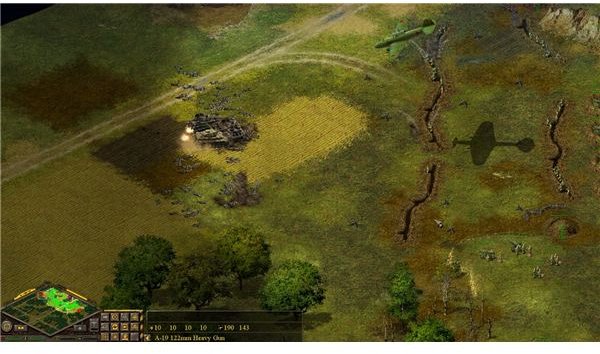
Legendary Strategy, The Stuff of Myth
After the First World War, an alternative to the horror of trench warfare and human wave attacks was sought by both the defeated and victorious powers. The Great War, as it was known at the time, killed millions of men and women and brought the economies of the developed world to ruin. Unfortunately, war was not wholly discredited as a means of solving international disputes and by the 1930’s another devastating war was on the horizon.
The combatants, especially Germany, wanted to avoid getting bogged down in static trench warfare and costly battles of attrition. Several theorists of the interwar period including Fuller in Britain, DeGaulle in France, and Guderian in Germany posited a new form of warfare revolving around highly mobile armored forces avoiding strongly held areas and instead cutting their communications and supply routes, sowing panic and confusion in their wake.
Thus blitzkrieg was born, and soon became a legendary tactic and strategy held responsible for the subsequent German victories over Poland and especially France, which had been considered to field the most powerful army in the world.
Assessing its Nature by Playing Blitzkrieg for PC
The truth of the legend is difficult to discern so long after the campaigns in Poland and France have ended. After the war, participants all had an interest in finding scapegoats for their successes and failures, and blitzkrieg was an easy, go-to answer able to explain the stunning victories of German formations over opponents who should have been able to fight them on equal terms.
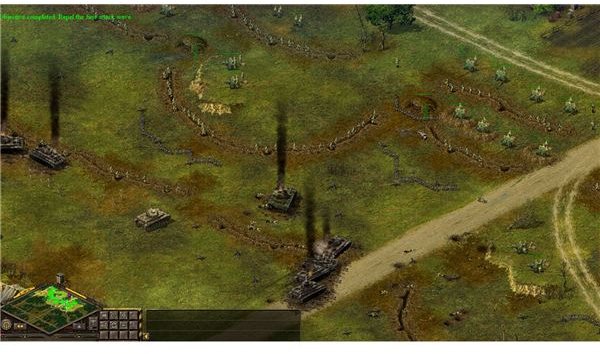
One of the most commonly held myths pertaining to WWII blitzkrieg tactics was that they relied on superior, well designed tank formations commanded by innovative leaders like Guderian and Rommel who were given the latitude by a far seeing command structure to strike their enemies as they felt best while utilizing their deadly efficient new tanks. Blitzkrieg for PC allows a test, at least, of the function of these supposedly superior tank formations on a small scale. As a tactically focused real time strategy title, the player is given half a dozen core armored units, half a dozen artillery units, and some auxiliary units including infantry, air support, and more armored units. A mission is assigned that involved military believable, realistic objectives commonly assigned to World War 2 units.
While it is naturally debatable as to the specific levels of realism present in any computer game, Blitzkrieg is one of the best titles out there that can be used to conduct such examinations because the designers paid special attention to getting correct the details of the hardware used in addition to the natural randomness of battle. Tanks are true to their relative capabilities and survivability, and artillery similarly is modeled on real world experience and function.
Lacking the ability to truly go back and experience a WWII blitzkrieg, games like Blitzkrieg for PC are as good a simulation as we can get.
Historic Background
Before assessing the actual performance of period equipment in using blitzkrieg concepts to achieve objectives, a note on blitzkrieg itself relative to other contemporary military strategies must be entered.
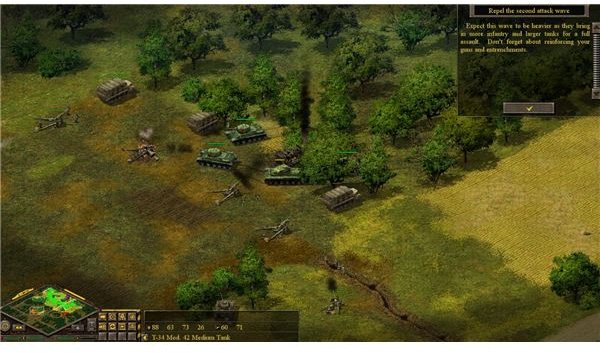
Blitzkrieg is commonly held to be the doctrine of the German military at the time, but this is not entirely the case. There was a significant deal of debate and disagreement within the German armed forces as to the significance of armored formations and a back and forth struggle between visionaries like Heinz Guderian and traditionalists within the service as to the proper employment of the German panzers on an operational level. Many German leaders wanted to use these tanks as support for infantry, breaking them up in ‘penny packets’ to provide local superiority. They were not comfortable with the idea of independently operating armored formations massed together and penetrating deep into enemy territory. They pressed for the use of armor as cavalry to exploit breakthroughs brought about by infantry attacks, followed by an envelopment of opposing forces and their destruction in a giant battle of annihilation.
Guderian and other contemporary proponents of armored warfare advocated massing tanks together at a single point of maximum effort to break through enemy lines and destroy their ability to control their forces and muster reserves.
Effectiveness
The actual behavior of the German military on an operational scale, even in the lightning victories over the Allies in 1940 indicates that the traditionalist view actual held sway, though certain innovative panzer generals like Guderian incorporated blitzkrieg tactics wherever they could. Perhaps the reasons for this shying away from blitzkrieg in its pure form is best demonstrated by the tactical simulations we can run in the Blitzkrieg PC game.
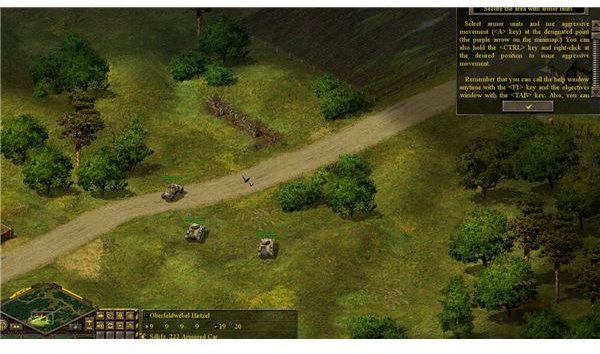
The early Blitzkrieg missions allow for a test of the blitzkrieg legend that revolves around technologically advanced German tanks outmaneuvering and destroying their opponents. First off, German tanks are on the whole much weaker than their contemporaries. Their armor is so light that infantry anti-tank rifles can penetrate their side armor, and their main guns are woefully inadequate when it comes to taking on even the weakest of their British and French contemporaries.
Taking even the best (in 1941) Panzer III or Panzer IV models into a head-on attack or even a flanking maneuver against British Matildas or French Somuas is simply suicidal in Blitzkrieg. Historic records indicate this is true to the real world. To destroy these tanks, German commanders needed to use airpower, artillery, or even massed infantry attacks to avoid their tanks being blown to smithereens.
The real kicker: most of the German tanks up until 1942 were Panzer II variants which had 20mm autocannons as their primary weapons - cannons that couldn’t penetrate the armor of any Allied tank at any distance or angle. Tank-on-tank battles were a sure loser for German generals in 1941.
In the Service of Other Nations
Running through Blitzkrieg scenarios makes it clear that the defeat of France wasn’t due to blitzkrieg alone. All the major German successes came at a time when their equipment was technically inferior to that of their opponents and each was characterized primarily by traditional encirclement battles fought by infantry. Blitzkrieg simulations support this - you almost can’t win as the Germans in1939-1941 without slowly and methodically using artillery to pick apart opposing forces and luring their superior tanks into the range of the most effective anti-armor weapon in the German arsenal: the 88mm anti-aircraft cannon.
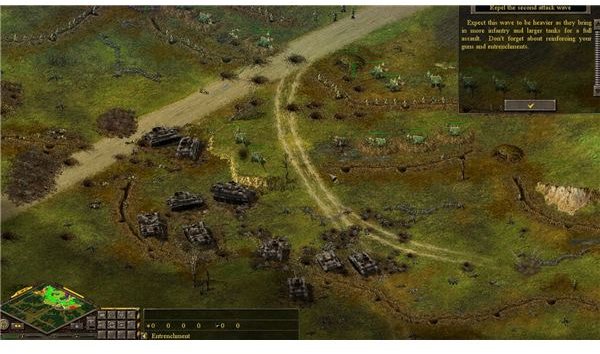
But the near mythic status accorded to blitzkrieg did have an unanticipated effect - other nations tried to copy what they thought had beat them. And no nation was more successful at it than the Soviet Union.
1941’s Operation Barbarossa shoved the Soviet Union back to the gates of its capital, Moscow. But after the successful defense of Moscow that winter and the counterattacks that saved the Soviets from defeat, it was their turn to innovate. Already in possession of superior KV-1 and T-34 tanks, by late 1942 the Soviets began to launch massive counteroffensives spearheaded by tank divisions that would thrust deep into the German lines and force them to retreat hundreds of miles at a time.
Blitzkrieg and the Soviets
Running some basic simulations in the Blitzkrieg game demonstrates the reason why the Soviets were able to survive the German’s onslaught and use blitzkrieg against them. The T-34, which was already a year old when Barbarossa was launched, outclasses every contemporary German tank of the time, and is nearly impervious to anything the Germans can throw at it. In Blitzkrieg the Soviets, not the Germans, can run half a dozen tanks around a defensive emplacement and then overrun it without taking extreme casualties.

Historically the Soviets saw far more clearly the potential tanks had for changing the battlefield. Though they called their doctrine something different - ‘Deep Operations’ - the Soviet offensives launched after the bloody victory in Stalingrad in 1942 and especially Operation Bagration in 1944 (which broke the German army in the East, and was so large that D-Day was a minor diversion by comparison) were blitzkrieg in its purest form, and brought the Soviet Union from the Russian steppes to the gates of Berlin in a single year.
Blitzkrieg is just a game, but one that pays a great deal of attention to historic accuracy and legitimately modeling World War 2 tactical combat. It is a valuable tool that can help us answer the long debated question: how effective was the blitzkrieg in World War 2?
